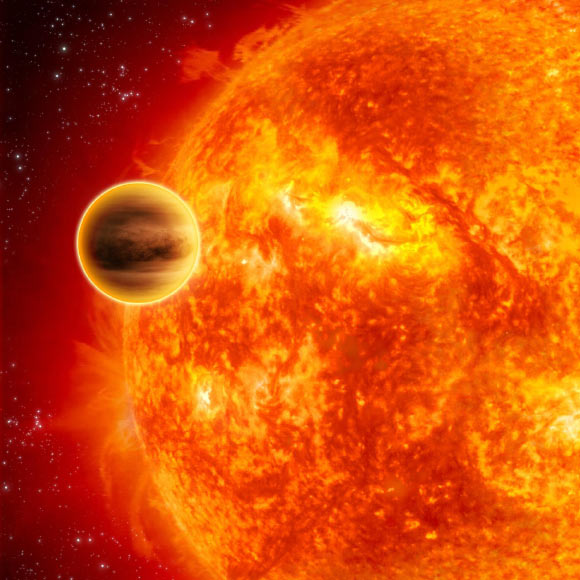TESS Finds ‘Improbable’ Exoplanet Circling Red-Giant Star | Astronomy – Sci-News.com
Using asteroseismic data from NASA’s Transiting Exoplanet Survey Satellite (TESS), an international team of astronomers revised the parameters for two exoplanet-hosting giant stars, HD 212771 and HD 203949, and found that the planet around HD 203949 should not exist in its location based on current theories.

An artist’s impression of a hot-Jupiter exoplanet. Image credit: C. Carreau / ESA.
HD 212771 is a G8-type bright subgiant star located about 364 light-years away from Earth. It hosts a Jovian planet with a minimum mass of 2.3 Jupiter masses in a 373-day orbit.
HD 203949 is a K2-type bright giant star about 257 light-years away. It has a massive planet (8.2 Jupiter masses) in a 184-day circular orbit around it.
In the study, Dr. Tiago Campante, an astronomer at the University of Porto and the University of California, Santa Barbara, and colleagues determined the physical properties of both stars, such as their mass, size and age, through asteroseismology.
“TESS observations are precise enough to allow measuring the gentle pulsations at the surfaces of stars,” said Dr. Campante, lead author of a paper published in the Astrophysical Journal.
“These two fairly evolved stars also host planets, providing the ideal testbed for studies of the evolution of planetary systems.”
The researchers then focused on the evolutionary state of HD 203949. Their aim was to understand how its planet, HD 203949b, could have avoided engulfment, since the envelope of the star would have expanded well beyond the current planetary orbit during the red-giant phase of evolution.
Based upon extensive numerical simulations, the scientists think that star-planet tides might have brought HD 203949b inward from its original, wider orbit, placing it where we see it today.
“We determined how this planet could have reached its current location, and to do so whether or not the planet had to survive engulfment within the stellar envelope of the red giant star,” said co-author Dr. Dimitri Veras, a researcher at the University of Warwick.
“The work sheds new light on the survivability of planets when their parent stars begin to die, and might even reveal new aspects of tidal physics.”
“This study is a perfect demonstration of how stellar and exoplanetary astrophysics are linked together,” said co-author Dr. Vardan Adibekyan, an astronomer at the University of Porto.
“Stellar analysis seems to suggest that HD 203949 is too evolved to still host a planet at such a short orbital distance, while from the exoplanet analysis we know that the planet is there.”
“The solution to this scientific dilemma is hidden in the simple fact that stars and their planets not only form but also evolve together. In this particular case, the planet managed to avoid engulfment.”
_____
Tiago L. Campante et al. 2019. TESS Asteroseismology of the Known Red-giant Host Stars HD 212771 and HD 203949. ApJ 885, 31; doi: 10.3847/1538-4357/ab44a8





